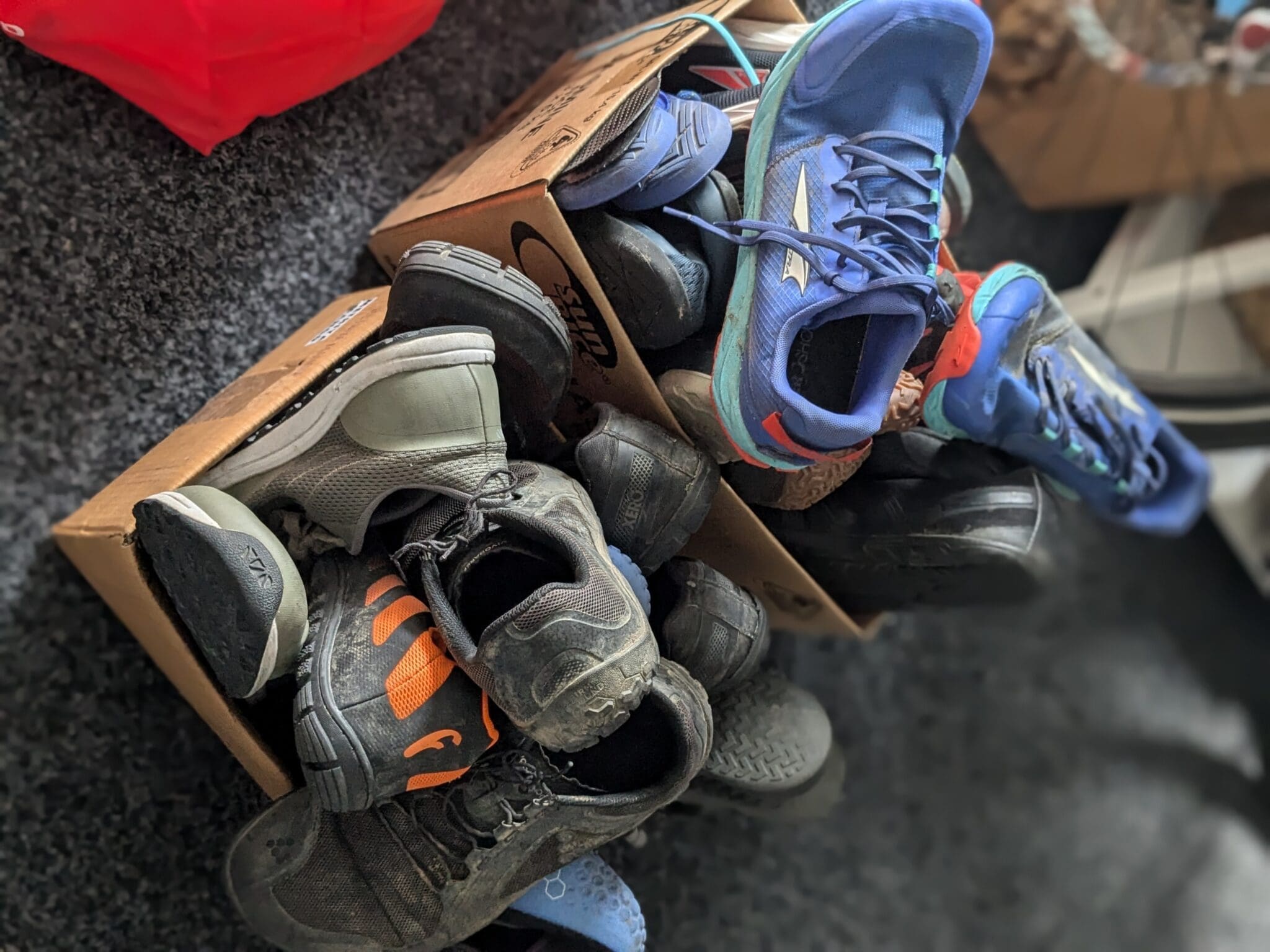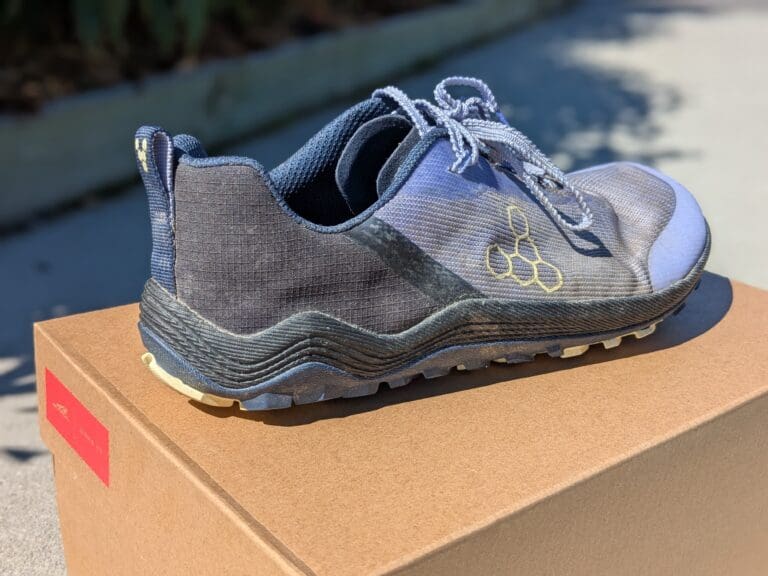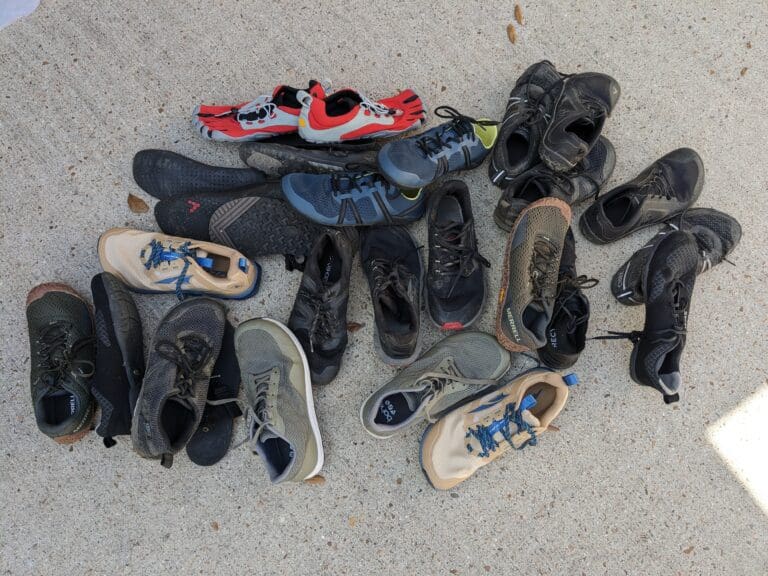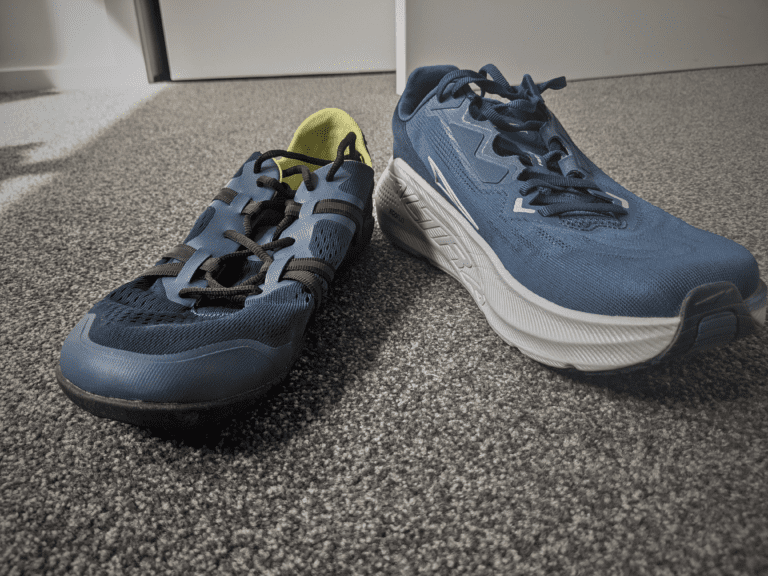I get this question constantly: “What’s the difference between barefoot shoes, minimalist shoes, and zero-drop shoes? Aren’t they all the same thing?”
Here’s the thing—they’re related, but they’re definitely not the same. The confusion is understandable because there’s significant overlap between these categories, but understanding the differences will save you from buying the wrong shoe for your needs.
Think of it like this: all barefoot shoes are zero-drop, but not all zero-drop shoes are barefoot. Minimalist shoes sit somewhere in the middle, borrowing features from both ends of the spectrum. And if that sounds confusing, don’t worry—that’s exactly what we’re going to untangle in this guide.
Affiliate Disclosure: By clicking through the links on this page and purchasing the products, you’ll be helping me out. This is done because I receive a kickback from the sellers at no extra cost to you! Thank you so much for supporting us!
Whether you’re making your first move away from traditional cushioned shoes or trying to figure out which category matches your running style, this post will give you a clear framework for making that decision.
Before we dive into specific categories, let’s get one thing straight: this isn’t a simple three-box classification system. The footwear industry loves clean categories, but the reality is much more like a continuous spectrum.
On one end, you have shoes that feel almost identical to running barefoot—thin soles, no cushioning, maximum ground feel. On the other end, you have zero-drop shoes with substantial cushioning that feel closer to traditional running shoes than to barefoot. And in between? A whole range of options that blend features from both extremes.
Here’s where it gets interesting: the primary difference between these categories comes down to stack height—the total amount of material between your foot and the ground. But that’s not the only factor. Ground feel, flexibility, weight, and durability all play into where a shoe lands on the spectrum.
The reason this matters is simple: choosing the wrong category for your current fitness level and running goals can lead to injury, frustration, or both. I’ve seen runners jump straight to barefoot shoes when they needed minimalist. I’ve seen others stick with zero-drop cushioning when they were ready for more ground feel. Understanding these distinctions helps you make smarter choices.
Let’s break down each category so you know exactly what you’re getting into.
Barefoot shoes are designed to replicate the experience of running barefoot while providing a thin protective layer between your foot and the ground. They’re the most extreme end of the spectrum, with minimal material underfoot and maximum ground feel.
Technical Characteristics
The defining features of barefoot shoes are remarkably consistent across brands:
When I say “maximum ground feel,” I mean you’ll feel texture, small rocks, and ground variations through the sole. With most barefoot shoes, I can tell the difference between concrete and asphalt. You’re getting direct sensory feedback from the ground with every step.
- Stack height: 4-14mm (take that with a pinch of salt)
- Weight: Average 246 grams per shoe
- Ground feel: As much as possible with trade-offs
- Flexibility: Extremely flexible in all directions
- Cushioning: Minimal to none
- Toe box: Wide and foot-shaped (almost universal)
- Drop: Always zero-drop (0mm heel-to-toe offset)
The Barefoot Experience
Running in barefoot shoes fundamentally changes how you interact with the ground. Your feet aren’t passively absorbing impact—they’re actively sensing and responding to terrain. This sensory feedback naturally encourages a forefoot or midfoot strike pattern and promotes what biomechanists call “natural running form.”
In my experience testing dozens of barefoot shoes, the stack height makes a massive difference in how they feel:
- 4-9mm stack: This is as close to barefoot as you can get while wearing shoes. You’ll feel every pebble, every texture—almost everything. Great for barefoot training if your legs and feet can handle it.
- 10-15mm stack: The sweet spot for most barefoot runners. You get excellent ground feel without feeling every tiny stone.
Which minimal running shoe is for you?
Take a quick 5-question quiz to identify the perfect minimal running shoe for your feet! You'll get both road and trail options based on your answers!
Pros of Barefoot Shoes
Strengthening and proprioception: This is the big one. Barefoot shoes force your feet and lower legs to do the work that cushioning normally handles. Over time, this builds strength in muscles that traditional shoes allow to atrophy. The proprioceptive feedback—your body’s awareness of position and movement—dramatically improves.
Natural movement patterns: Without heel cushioning to land on, you naturally shift toward a forefoot or midfoot strike. This isn’t just about form—it’s about biomechanical efficiency. Your foot’s natural shock absorption system (arch, calf muscles, Achilles) gets engaged properly.
Lightweight and minimal: At an average of 246 grams, barefoot shoes feel like you’re wearing almost nothing. After a long run in traditional shoes, switching to barefoot shoes feels like taking off weighted boots.
Ground connection: There’s something psychologically different about feeling the ground directly. Trail running becomes more engaging. You’re not just *on* the trail—you’re *connected* to it.
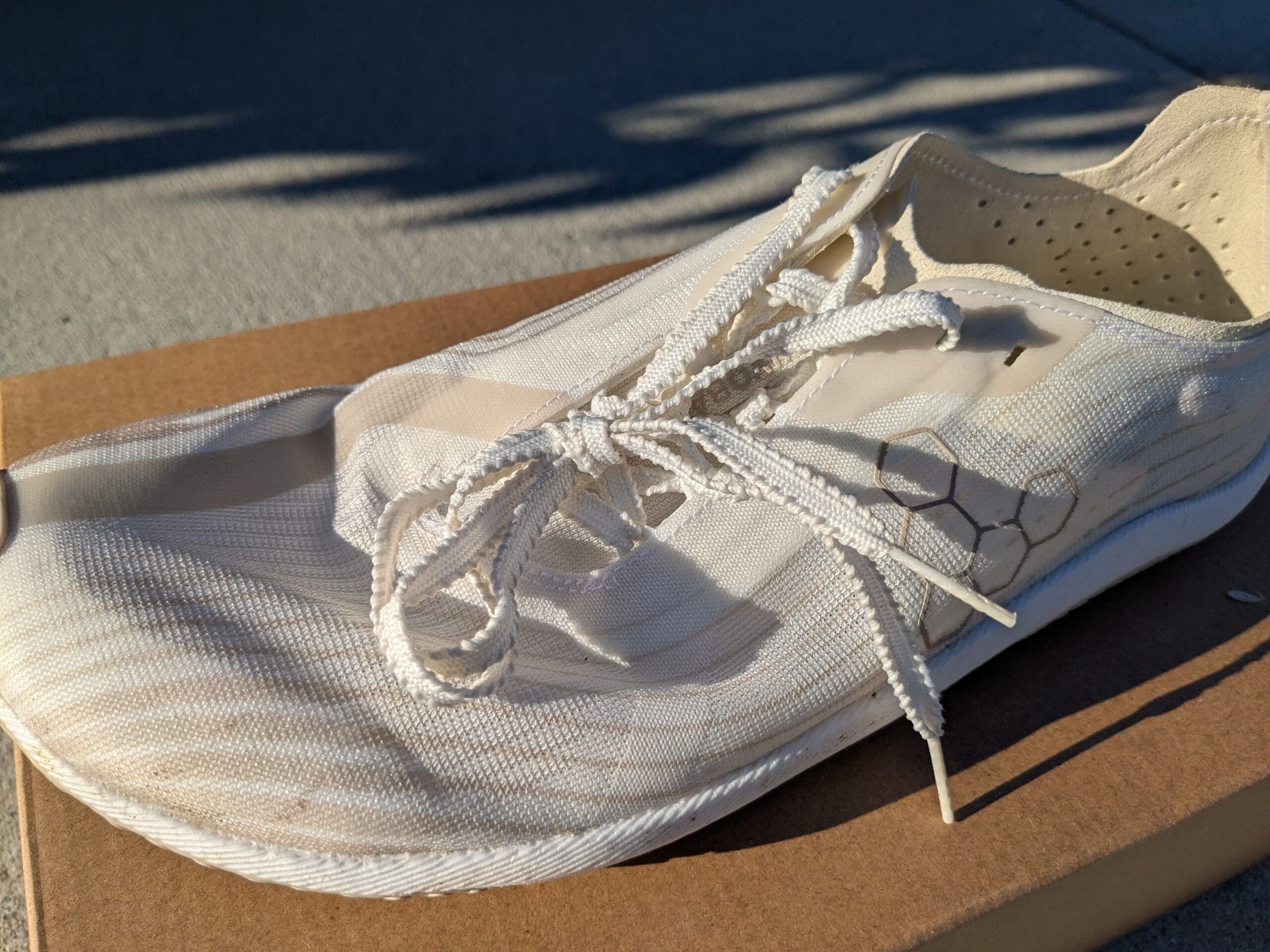
Cons of Barefoot Shoes
Steep learning curve: This is not an exaggeration. Jumping straight into barefoot shoes from traditional running shoes is a recipe for injury. Your feet and lower legs need time—often months—to adapt. Most runners need 3-6 months of gradual transition.
Durability concerns: With such thin soles, wear patterns show up quickly on high-mileage shoes. Poorly-built barefoot shoes with soft rubber outsoles can wear through surprisingly fast—sometimes in just 200-300 miles. Quality barefoot shoes with durable rubber compounds typically deliver 400-500 miles. The upside? Without thick foam midsoles to compress and break down, the primary durability concern is outsole wear, not cushioning degradation. When a barefoot shoe wears out, it’s usually obvious—you can see the worn rubber.
Limited protection: On technical trails with sharp rocks, roots, and unpredictable terrain, barefoot shoes can feel vulnerable. You’ll feel every sharp edge, which means slower, more cautious running on rough trails.
Not beginner-friendly: If you’re coming from cushioned traditional shoes, barefoot shoes will feel shockingly different. The risk of doing too much too soon is high.
Who Should Choose Barefoot Shoes?
You’re a good candidate for barefoot shoes if:
Don’t start with barefoot shoes if: you’re new to the natural running world, you have a history of foot injuries, or you’re not willing to dramatically reduce your mileage during transition.
- You’ve already successfully transitioned to zero-drop or minimalist shoes
- You want maximum foot strengthening and proprioceptive benefits
- You’re willing to commit to a gradual transition process
- You run primarily on predictable surfaces (roads, smooth trails)
- You value ground feel and natural movement over protection and cushioning
Minimalist shoes strike a balance between barefoot ground feel and protective cushioning. They’re designed to encourage natural foot function while providing more protection and forgiveness than barefoot shoes. Think of them as “barefoot with training wheels.”
Technical Characteristics
Minimalist shoes occupy the middle of the spectrum:
The key difference from barefoot shoes? You get a bit more cushioning underfoot without losing the connection to the ground. It’s not thick foam cushioning—it’s just enough to take the edge off sharp rocks while still letting you feel terrain changes.
- Stack height: 10-24mm
- Weight: Average 250 grams per shoe
- Ground feel: Moderate to high (varies more than barefoot)
- Flexibility: Very flexible, but with slight structure
- Cushioning: Minimal but noticeable
- Toe box: Usually wide and foot-shaped
- Drop: Zero-drop or low-drop (0-4mm)
The Minimalist Experience
Running in minimalist shoes feels like a compromise in the best possible way. You maintain significant ground feel and natural foot function, but with a safety net that makes the transition process more forgiving.
In practice, here’s what different stack heights feel like in the minimalist category:
- 10-14mm stack: Very close to barefoot. You still feel most ground texture, but sharp rocks don’t hurt as much.
- 15-18mm stack: The sweet spot for many runners. Enough cushioning for longer runs, enough ground feel to maintain natural form.
- 19-24mm stack: More protective minimalist shoes. Still promotes natural movement but feels more like traditional shoes on first wear.
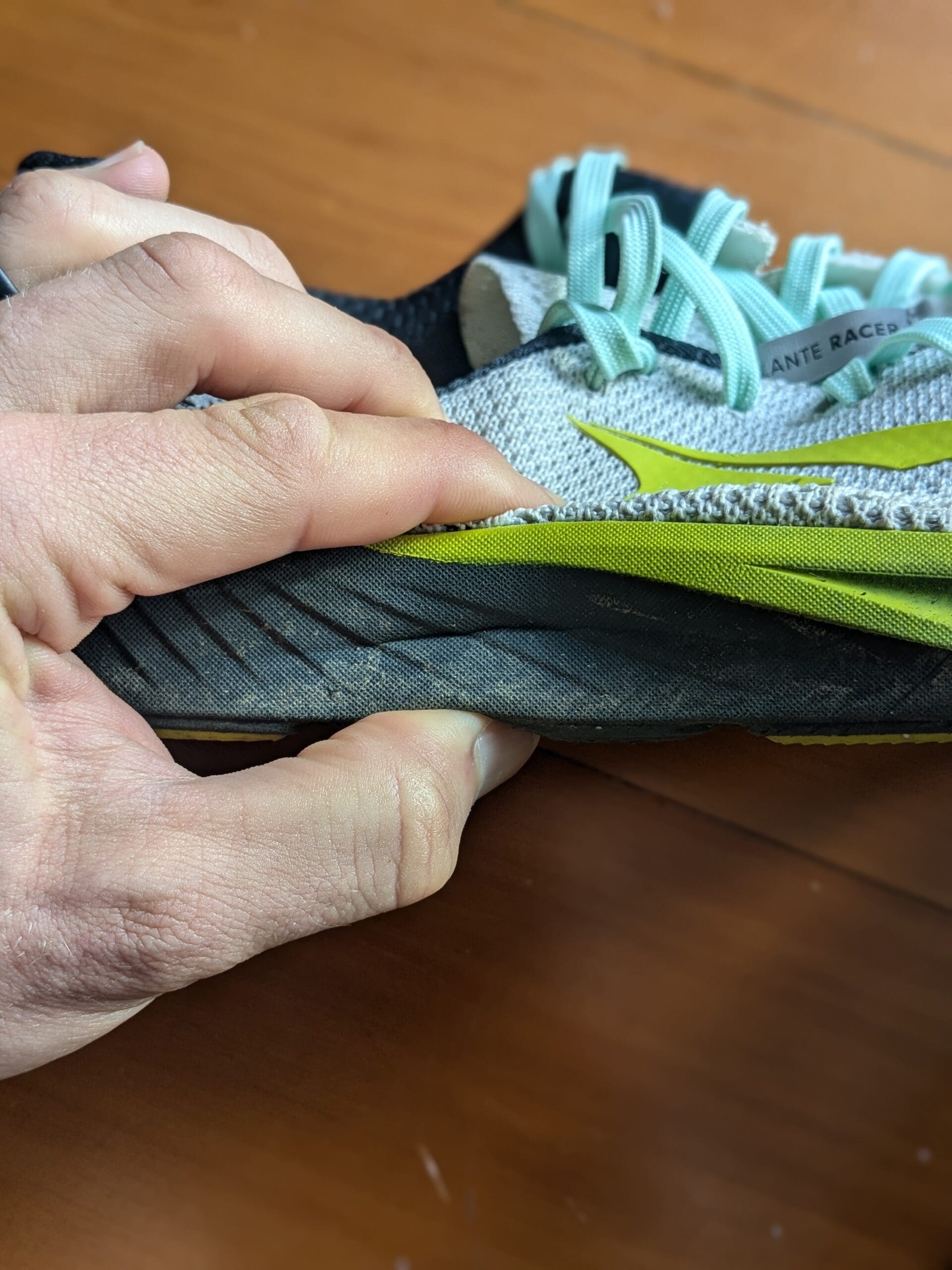
Pros of Minimalist Shoes
Easier transition: The extra cushioning makes the adaptation process less severe. Instead of jumping from 30mm of cushioning to 8mm, you’re stepping down to 15-18mm. Your feet and calves still need time to adapt, but the learning curve isn’t as steep.
Versatility: Minimalist shoes handle a wider range of terrain and conditions than barefoot shoes. Technical trails? No problem. Road running? Comfortable. Mixed surfaces? Perfect. The moderate stack height provides enough protection without sacrificing too much ground feel.
Better durability: With 10-15mm of sole material instead of 5-8mm, minimalist shoes typically last 400-700 miles. That’s 100-200 miles more than most barefoot shoes.
Improved comfort for longer distances: The slight cushioning makes a real difference on runs over 10 miles. Your feet fatigue less quickly than in barefoot shoes, which means you can maintain form and speed for longer.
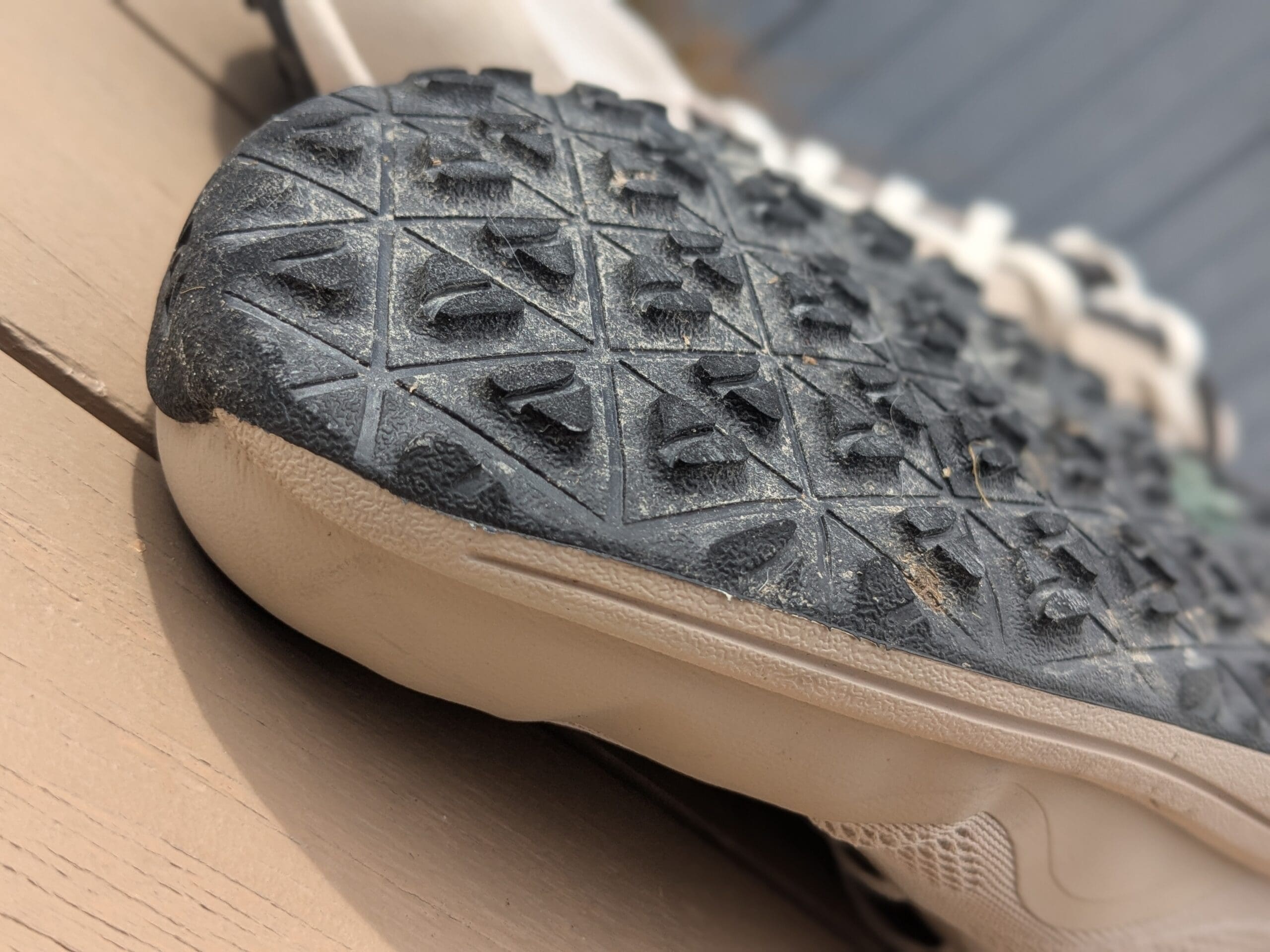
Cons of Minimalist Shoes
Less ground feel than barefoot: This is the inevitable trade-off. With more cushioning comes less sensory feedback. You won’t feel subtle texture changes or small pebbles the way you do in barefoot shoes.
Still requires transition: Don’t be fooled by the moderate cushioning—minimalist shoes still demand significant adaptation from traditional running shoes. You’ll need 6-12 weeks of gradual mileage building and form adjustment.
Category confusion: Because minimalist shoes blend features from both barefoot and zero-drop categories, it’s easy to grab the wrong shoe. Some “minimalist” shoes lean heavily toward barefoot (thin, flexible, maximum ground feel), while others feel closer to zero-drop cushioning.
Not extreme enough for purists: If your goal is maximum foot strengthening and proprioceptive development, minimalist shoes won’t deliver the same intensity as barefoot shoes.
Who Should Choose Minimalist Shoes?
You’re a good candidate for minimalist shoes if:
Start with minimalist shoes if: you’re new to natural running, you have a moderate weekly mileage (20-40 miles), or you’re not sure if you’ll commit to the full barefoot experience.
- You’re transitioning from traditional running shoes and want a gentler adaptation
- You run on varied terrain and need versatility
- You want significant ground feel without maximum exposure
- You’re training for longer distances and need some cushioning
- You want better durability than barefoot shoes offer
- You value the balance between natural movement and protective comfort
Zero-drop shoes eliminate the heel-to-toe offset found in traditional running shoes while maintaining substantial cushioning. They’re the least extreme category, focusing on natural foot positioning rather than maximum ground feel.
Technical Characteristics
Zero-drop shoes are the most cushioned option in the natural running world:
The defining feature here is thick cushioning with a flat platform. You’re getting protection from impact without the heel elevation that encourages heel striking. It’s a fundamentally different approach than barefoot or minimalist shoes.
- Stack height: 21-33mm
- Weight: Average 280 grams per shoe
- Ground feel: Low to moderate
- Flexibility: Moderate (less flexible than minimalist/barefoot)
- Cushioning: Substantial—similar to traditional running shoes
- Toe box: 88% are foot-shaped (wide and accommodating)
- Drop: Always zero-drop (0mm heel-to-toe offset)
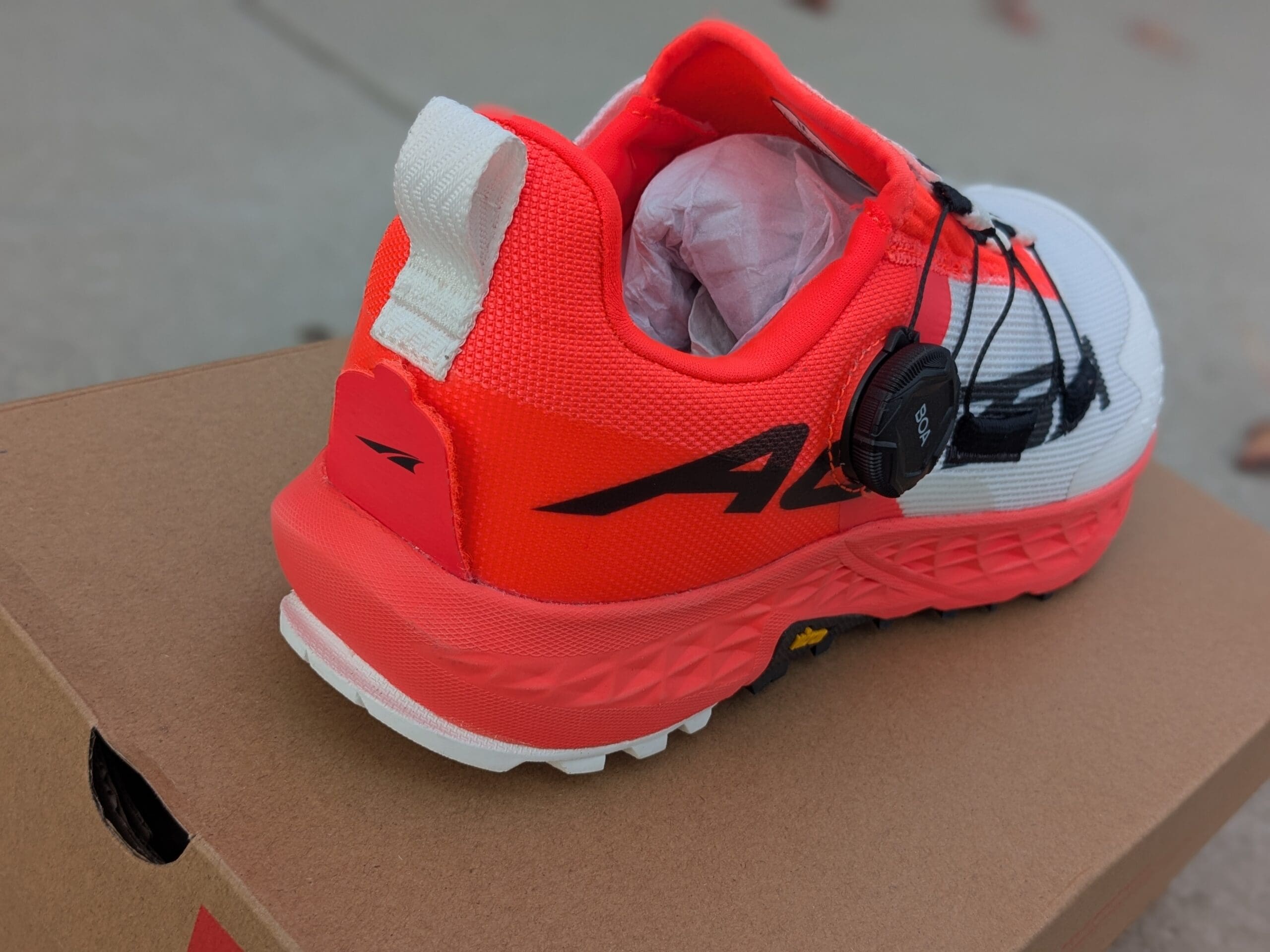
The Zero-Drop Experience
Running in zero-drop shoes feels surprisingly normal if you’re coming from traditional cushioned shoes. The cushioning is familiar and comfortable, but your foot position is neutral rather than angled downward.
In practice, stack height variations feel like this:
- 21-24mm stack: The lower end of zero-drop. Still cushioned, but you’ll feel more ground connection than higher-stack options.
- 25-28mm stack: The sweet spot for most zero-drop runners. Substantial cushioning for all-day comfort without feeling disconnected.
- 29-33mm stack: Maximum cushioning zero-drop shoes. Provide plush, protective cushioning similar to traditional running shoes but with zero-drop geometry.
Which Altra Shoe is for you?
Take a quick 4-question quiz to identify the perfect Altra running shoe for your feet! You'll get both road and trail options based on your answers!
Pros of Zero-Drop Shoes
Easiest transition: This is the number one advantage. Zero-drop shoes allow you to adapt to neutral foot positioning without simultaneously adapting to minimal cushioning. You can maintain your current mileage and pace while your Achilles and calves gradually adjust to the zero-drop platform. Most runners complete this transition in 4-6 weeks.
Maximum protection: With 25-30mm of cushioning, zero-drop shoes handle technical trails, long road runs, and ultra-distance events with ease. Sharp rocks? No problem. Long descents? Comfortable. You get the protection you need for demanding terrain.
Beginner-friendly: If you’re curious about natural running but intimidated by barefoot shoes, zero-drop is the perfect starting point. The learning curve is gentle, the injury risk is low, and you can always progress to minimalist or barefoot shoes later.
Wide toe box (88% of models): Zero-drop shoes almost universally feature foot-shaped toe boxes that allow natural toe splay. This is a huge benefit for runners with wide feet or bunions who struggle with traditional narrow running shoes. Women’s-specific models often provide better heel security and volume distribution.
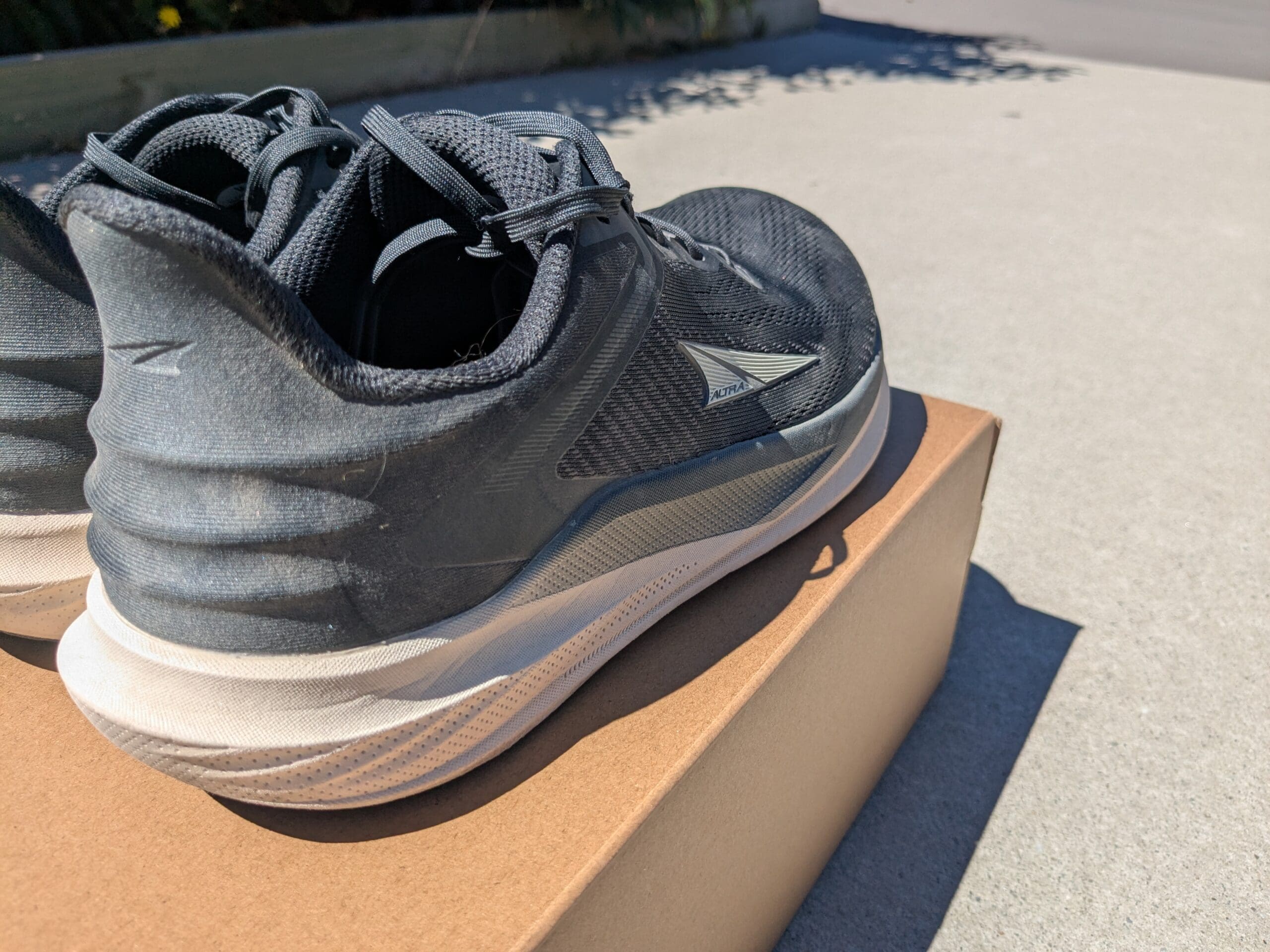
Cons of Zero-Drop Shoes
Limited ground feel: With 25-30mm of foam between your foot and the ground, sensory feedback is minimal. You won’t develop the same proprioceptive awareness or natural movement patterns that barefoot shoes provide.
Less foot strengthening: The substantial cushioning does much of the work that barefoot shoes force your feet to do. While you’ll still build some strength compared to traditional shoes (due to the zero-drop geometry), it’s nowhere near the intensity of barefoot training.
Heavier: At 280 grams average, zero-drop shoes are 34 grams heavier than barefoot shoes. That might not sound like much, but over 10,000 steps per mile, the difference adds up. They feel noticeably clunkier and less nimble.
Not true “natural running”: If your goal is to run as naturally as possible, zero-drop shoes don’t fully deliver. They remove heel elevation, which is good, but they still rely on artificial cushioning to absorb impact rather than teaching your body to do it naturally.
Who Should Choose Zero-Drop Shoes?
You’re a good candidate for zero-drop shoes if:
Start with zero-drop shoes if: you have a history of Achilles or calf injuries, you’re training for your first marathon or ultra, or you want to test natural running without fully committing to barefoot. For hikers, zero-drop hiking shoes offer similar benefits for trail adventures.
- You’re making your first move away from traditional running shoes
- You run high weekly mileage and need protective cushioning
- You prioritize comfort and injury prevention over ground feel
- You have wide feet and need a foot-shaped toe box
- You run ultra-distances or long trail races where cushioning matters
- You’re not interested in maximum foot strengthening
Let’s put all three categories next to each other so you can see exactly how they stack up (some data aggregated from my testing):
| Feature | Barefoot | Minimalist | Zero-Drop |
|---|---|---|---|
| Stack Height | 4-14mm | 10-24mm | 21-33mm |
| Weight | 246g average | 250g average | 280g average |
| Ground Feel | Maximum | Moderate to high | Low to moderate |
| Flexibility | Extremely flexible | Very flexible | Moderately flexible |
| Transition Time | Minimal to none | Light cushioning | Substantial cushioning |
| Foot Strengthening | Maximum | Moderate | Minimal |
| Protection | Minimal | Moderate | Maximum |
| Toe Box | 95%+ foot-shaped | 90%+ foot-shaped | 88% foot-shaped |
| Best For | Experienced natural runners | Intermediate transition | Beginners, high mileage |
What the Data Reveals
The progression from barefoot to minimalist to zero-drop follows a clear pattern: as stack height increases, protection and comfort increase, but ground feel and foot strengthening decrease.
The 34-gram weight difference between barefoot (246g) and zero-drop (280g) shoes might seem small, but over a marathon, you’re lifting an extra 1,300 pounds with each foot. That’s why barefoot shoes feel so much lighter and more nimble. But that lightweight aspect can also come with drawbacks.
Ground feel is where the categories diverge most dramatically (logically). 64% of barefoot shoes offer maximum ground feel, while zero-drop shoes provide minimal to moderate ground feel at best. Minimalist shoes fall in between, offering a compromise that satisfies neither extreme perfectly.
Let’s get practical. Here’s how to choose based on your current situation and goals:
If You’re Brand New to Natural Running
Start with zero-drop shoes. Seriously. I know barefoot shoes seem exciting, but jumping straight to minimal cushioning is asking for injury. Zero-drop shoes let you adapt to neutral foot positioning without simultaneously shocking your feet and calves with minimal cushioning.
Recommended starting point:
Give yourself 4-6 weeks in zero-drop shoes before considering bridge shoes or minimalist options.
- Zero-drop shoes with 24-28mm stack
- 4-6 weeks for initial transition
- Maintain 80-90% of your normal mileage
- Then consider moving to minimalist after you’re comfortable
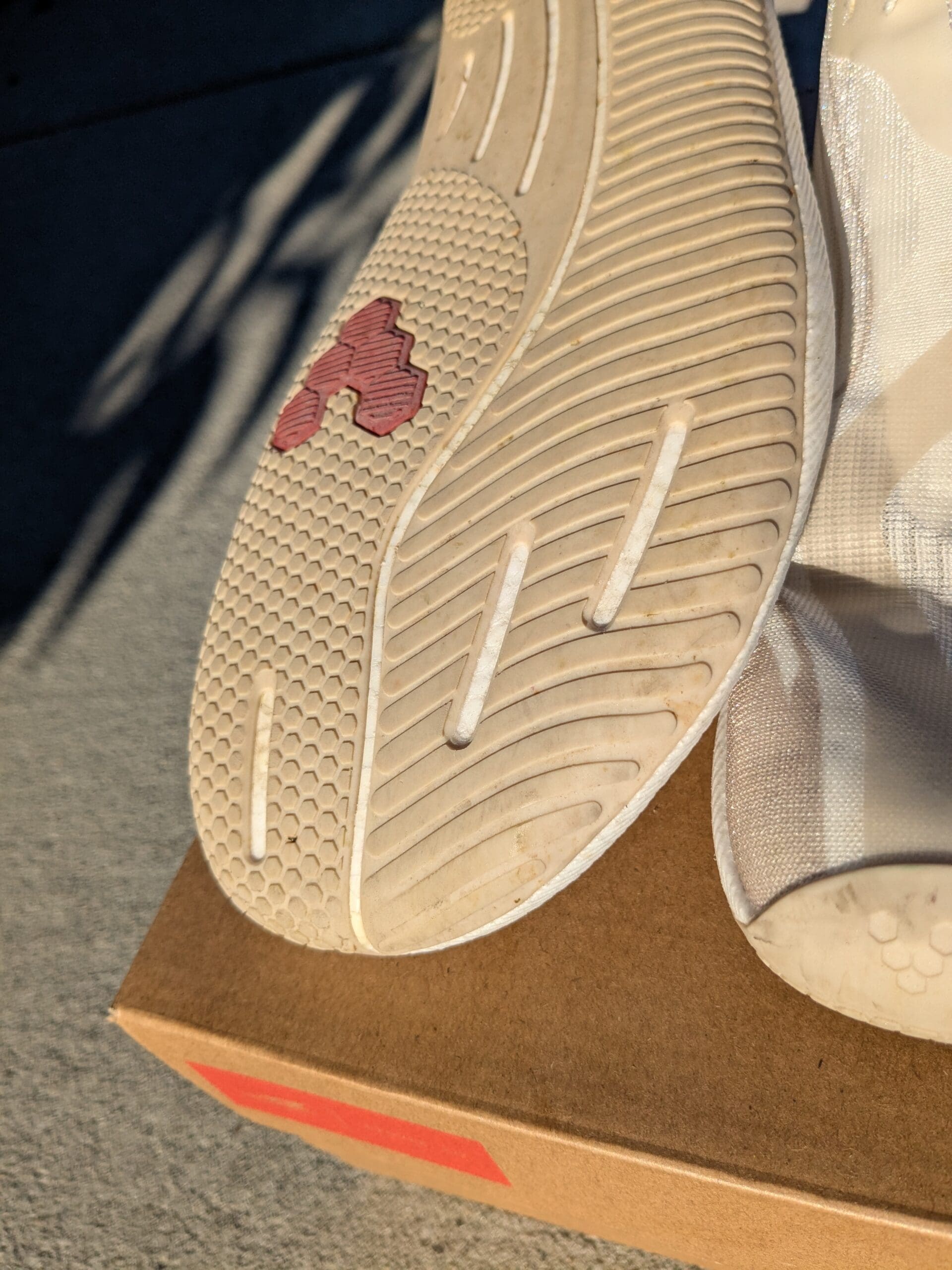
If You’re Transitioning From Traditional Shoes
Your current weekly mileage matters:
The rule of thumb: The higher your mileage, the more gradual your transition should be.
- Under 20 miles/week: You can start with minimalist shoes if you’re willing to reduce mileage initially. Try models with 14-16mm stack.
- 20-40 miles/week: Start with zero-drop, then transition to minimalist after 2-3 months. Your higher volume means more adaptation stress.
- Over 40 miles/week: Zero-drop is the safest starting point. Keep your mileage, adapt your foot position, then progress gradually to minimalist over 4-6 months.
If You Have Injury History
Previous Achilles or calf injuries: Start with zero-drop and progress slowly. The transition to minimalist or barefoot shoes places significant stress on the Achilles and calves. Give these tissues time to adapt.
Plantar fasciitis or foot pain: Minimalist shoes might actually help by strengthening foot muscles, but start conservatively. Zero-drop provides a safer entry point if you’re nervous.
Knee or hip issues: Any of these categories can help by improving biomechanics, but zero-drop offers the most forgiving starting point.
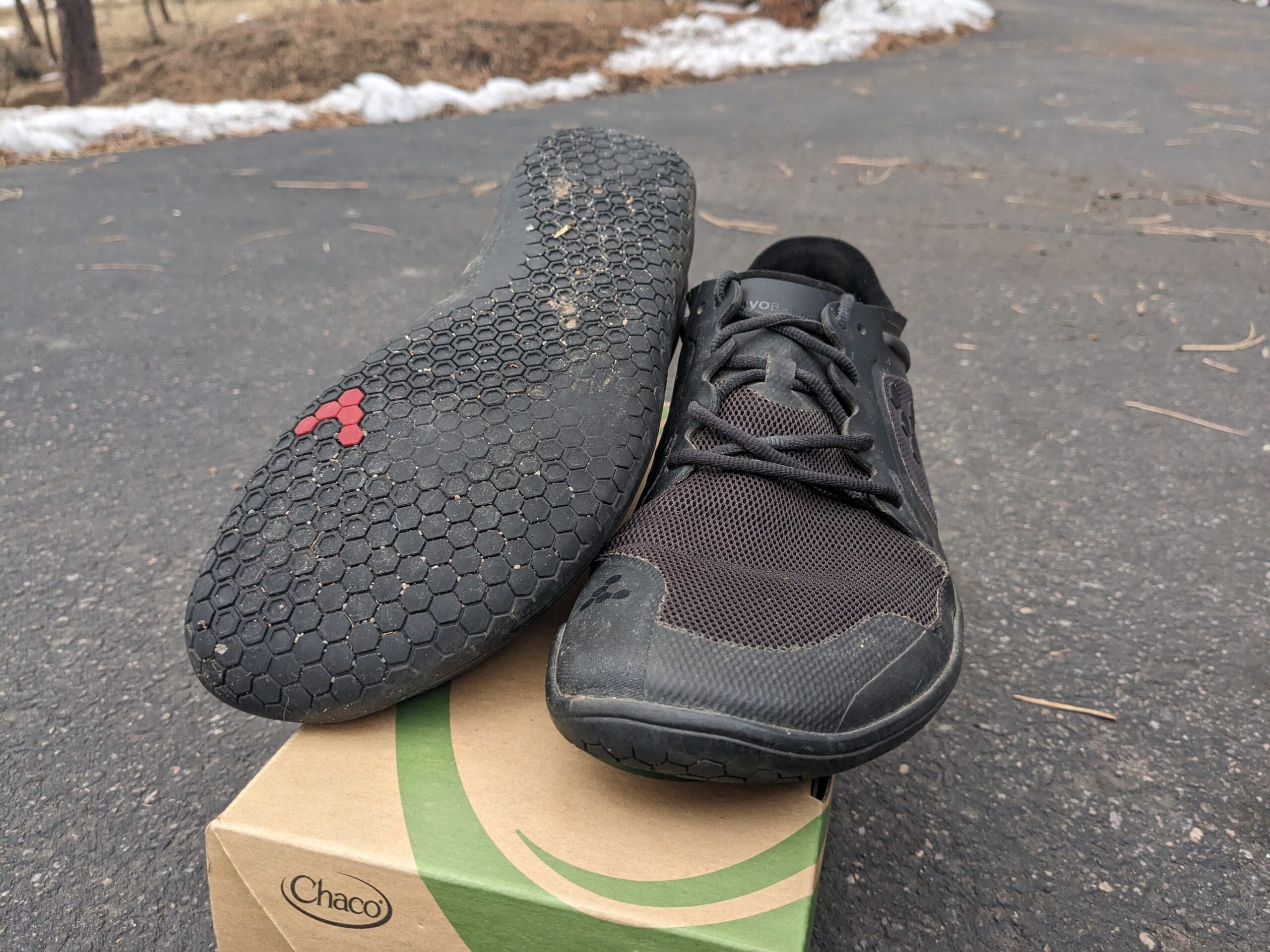
If You Want Maximum Foot Strengthening
Go minimalist first, then barefoot. Even if your ultimate goal is barefoot running, taking 3-6 months to build strength in minimalist shoes first will make the final transition to barefoot much smoother and safer.
Progressive approach:
This staged approach dramatically reduces injury risk compared to jumping straight to barefoot.
- Months 1-3: Zero-drop shoes (build tolerance for neutral foot position)
- Months 4-9: Minimalist shoes (begin foot strengthening with moderate protection)
- Months 10+: Barefoot shoes (maximum strengthening with full ground feel)
If You Run Trails
Terrain matters:
- Smooth, groomed trails: Barefoot or minimalist shoes work great. You get ground feel and agility on predictable terrain.
- Technical, rocky trails: Minimalist or zero-drop shoes provide better protection. The extra cushioning protects your feet without sacrificing too much ground feel.
- Mixed terrain (road + trail): Minimalist shoes are the most versatile. They handle varied surfaces better than barefoot or zero-drop extremes.
If You Run Roads
All three categories work for road running, but:
Most serious road runners end up with shoes from 2-3 categories for different training purposes.
- Barefoot shoes shine on smooth pavement where ground feel enhances form and engagement.
- Minimalist shoes balance comfort and connection for daily training miles.
- Zero-drop shoes excel for long runs, marathons, and high-mileage weeks where cushioning prevents fatigue.
Here’s what most guides don’t tell you: transitioning between categories requires the same gradual approach as your initial transition to natural running.
Going More Minimal (Zero-Drop → Minimalist → Barefoot)
The 10% rule roughly applies: When dropping stack height, reduce your weekly mileage by 10-20% for the first 2-3 weeks. It’s a good guideline, but individual conditions vary—your age, running experience, foot strength, and how quickly you’ve transitioned before all factor in. If you’re running 30 miles per week in zero-drop shoes, dropping to 24-27 miles when you switch to minimalist is a smart starting point.
Progressive volume building:
Pay attention to these signals:
- Week 1-2: Start with 10-20% of weekly volume in new shoes
- Week 3-4: Increase to 30-40% of weekly volume
- Week 5-8: Gradually increase to 70-80% of weekly volume
- Week 9+: Full transition if no pain or discomfort
- Calf soreness (normal initially, should decrease after 2-3 weeks)
- Arch fatigue (expected, but sharp pain is a red flag)
- Achilles tightness (common, but persistent pain means slow down)
- Metatarsal discomfort (if this intensifies beyond week 3, you’re progressing too fast)
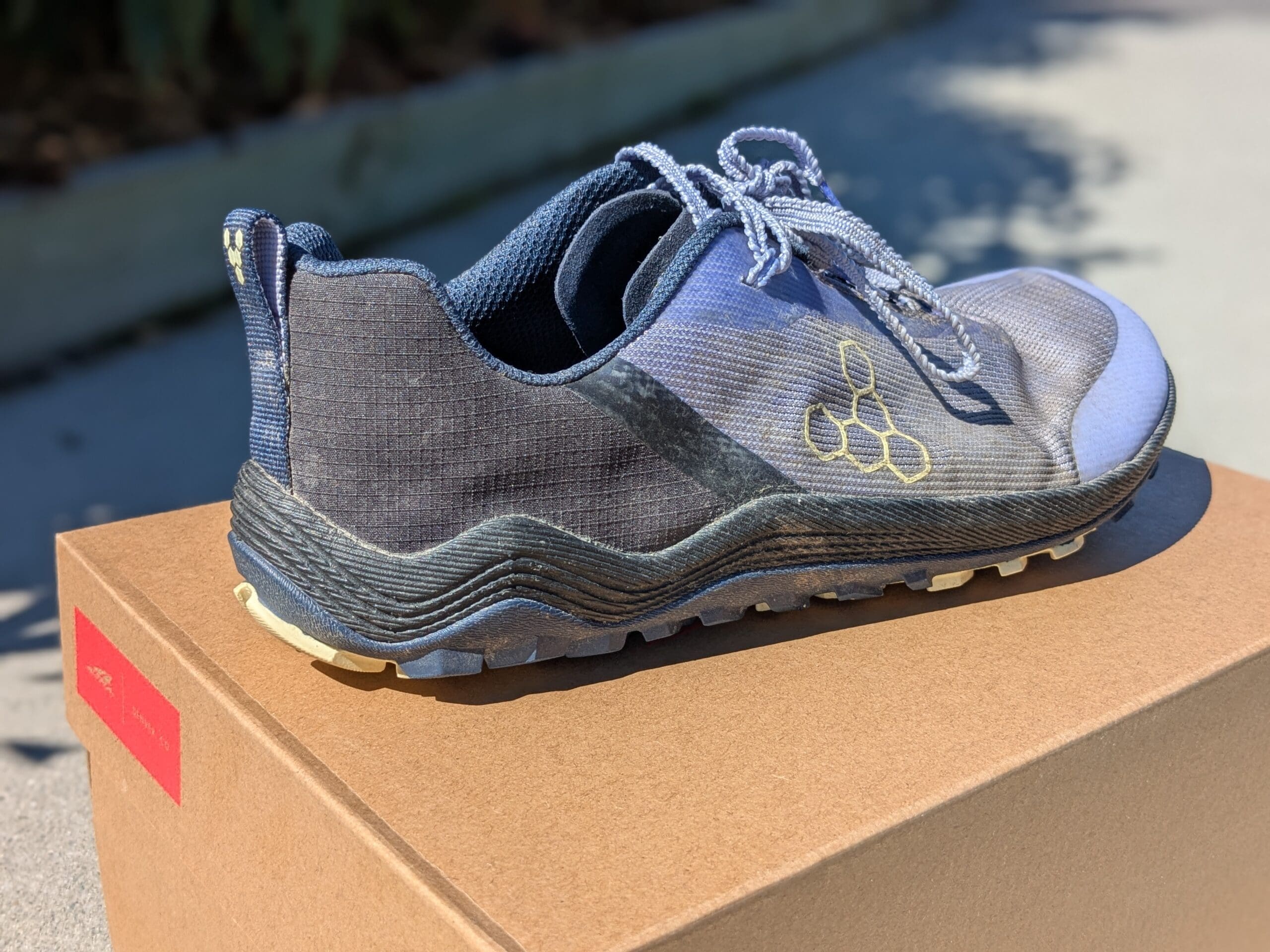
Going More Cushioned (Barefoot → Minimalist → Zero-Drop)
Yes, this happens. Sometimes you realize you went too minimal too fast, or life circumstances change (pregnancy, injury recovery, ultra-marathon training).
The good news: moving toward more cushioning is much easier than moving toward less. You can transition within 1-2 weeks typically.
Why runners add cushioning back:
- Training for ultra-distances that demand more protection
- Recovering from injury where extra cushioning aids healing
- Running higher weekly mileage than feet can handle minimally
- Shifting focus from foot strengthening to performance/speed
- Dealing with age-related changes in foot padding or recovery
“Minimalist shoes are just ‘not quite barefoot’ shoes”
Not really. Minimalist shoes aren’t failed barefoot shoes—they’re a distinct category with their own advantages. They offer a balanced middle ground that some runners prefer permanently, not just during transition.
Many experienced natural runners stick with minimalist shoes long-term because they provide the optimal balance of ground feel and protection for their needs.
“You need to progress from zero-drop → minimalist → barefoot”
Not necessarily. While this progression works well for many runners, it’s not mandatory. Some runners transition directly from traditional shoes to minimalist (skipping zero-drop), while others stay in zero-drop permanently and never go more minimal.
Your end goal should match your needs, not an arbitrary category hierarchy. If zero-drop shoes meet your needs perfectly, there’s no reason to force yourself into barefoot shoes just because they’re “more pure.”
“More minimal is always better”
Absolutely not. This is the dangerous misconception that leads to injuries. More minimal is better for foot strengthening and proprioception, but worse for protection and comfort. The “best” category depends entirely on your goals, experience level, and running demands.
A runner training for 100K might need zero-drop cushioning. A runner working on form and foot strength might thrive in barefoot shoes. A runner balancing both goals might prefer minimalist. None of these choices is “better”—they’re just different.
“Transitioning takes 6-12 weeks no matter what”
The timeline varies dramatically based on starting point and ending point. Going from traditional shoes to zero-drop takes 4-6 weeks. Going from traditional to barefoot takes 3-6 months. Going from zero-drop to barefoot takes 2-4 months.
The bigger the change in stack height and cushioning, the longer the adaptation period. Don’t let generic timelines rush you into injury.
If you’ve read this far, you understand the spectrum. Now let’s make this practical with clear decision points:
Choose Barefoot Shoes If:
Starting point: Choose a 10-12mm barefoot shoe from an established brand known for durability and consistency. Models like the Merrell Vapor Glove 6 offer excellent ground feel.
- You want maximum foot strengthening and proprioceptive development
- You’re willing to commit to a 3-6 month gradual transition
- You run primarily on predictable, smooth surfaces
- You value ground feel and natural movement above all else
- You’ve already successfully transitioned to minimalist shoes
- You’re prepared for reduced durability and more frequent shoe replacement
Choose Minimalist Shoes If:
Starting point: Choose a 14-16mm minimalist shoe with proven durability track record. The Altra Escalante Racer 2 (22mm) bridges the gap beautifully between minimalist and zero-drop.
- You want a balance of ground feel and protective cushioning
- You’re transitioning from traditional shoes and need a gentler adaptation
- You run on varied terrain and need versatility
- You train for longer distances but still want natural movement benefits
- You want better durability than barefoot shoes
- You’re not ready to commit to the full barefoot experience
Choose Zero-Drop Shoes If:
Starting point: Choose a 24-28mm zero-drop shoe with wide toe box and excellent cushioning. The Altra Timp 5 (29mm) provides maximum cushioning for ultra-distance running.
- You’re brand new to natural running and want the easiest transition
- You run high weekly mileage (40+ miles/week)
- You need maximum protection for technical trails or ultra-distances
- You have wide feet and need a foot-shaped toe box
- You have a history of Achilles or calf injuries
- You prioritize comfort and cushioning over ground feel
One Last Thing: You Can Own Multiple Categories
Here’s the truth: serious natural runners usually own shoes from 2-3 categories.
Using different categories for different purposes is smart, not inconsistent. Match the shoe to the run’s purpose. Use barefoot for strengthening and form work. Use minimalist for daily training. Use zero-drop for long efforts where protection matters.
The categories aren’t competing options—they’re complementary tools.
The barefoot vs. minimalist vs. zero-drop debate isn’t about finding the “right” answer—it’s about finding the right category for your current needs and goals.
If you’re new to natural running, start with zero-drop shoes. Give yourself time to adapt to neutral foot positioning before adding the challenge of minimal cushioning. After 2-3 months, reassess. Maybe you love zero-drop cushioning and want to stay there. Or maybe you’re ready to try minimalist shoes for more ground feel and foot strengthening.
If you’re ready for the full barefoot experience, commit to the gradual transition. Don’t rush it. Respect the 3-6 month adaptation timeline. Your feet and calves will thank you.
And remember: these categories are tools, not identities. You’re not a “barefoot runner” or a “zero-drop runner”—you’re a runner who uses different tools for different purposes. Be flexible. Experiment. Listen to your body.
The spectrum of barefoot, minimalist, and zero-drop shoes gives you options. Use them wisely, transition gradually, and choose the category that supports your running goals. That’s the real difference that matters.
Find Your Next Shoe
Ready to explore specific shoes in each category? Here are our top picks and guides:
Zero-Drop Shoes
- Zero Drop Running Shoes 2025 – Complete guide to the best zero-drop options
- Best Zero Drop Running Shoes for Women 2025 – Women’s-specific recommendations
- Top 5 Zero Drop Running Shoes with Cushion – Maximum protection with zero heel-to-toe drop
- Best Zero Drop Hiking Shoes 2025 – For trail adventures beyond running
Barefoot & Minimalist Shoes
- Best Barefoot Running Shoes for Beginners 2025 – Start your barefoot journey here
- Top 4 Barefoot Trail Running Shoes 2025 – Maximum ground feel on the trails
- Best Lightweight Barefoot Running Shoes for Speed – When performance matters
- Best Budget Barefoot Running Shoes Under $100 – Quality without breaking the bank
Transition Resources
- The 3 Best Bridge Shoes for Transitioning to Barefoot Running – Perfect stepping stones between categories
- Why Use Zero Drop Running Shoes? – The case for ditching the heel
Brand Roundups
- Xero Shoes Roundup – Which Xero model is right for you
- Altra Trail Running Shoes 2025 Roundup – The complete Altra trail lineup
- The 4 Best Vivobarefoot Shoes for Running – Top picks from the barefoot pioneer
